



In the countryside, you can orientate by using a map, a compass or azimuth. If we do not have any instruments available, we need to help ourselves with various natural phenomena. There are many ways how to orientate in this situation. We should always know or have at least a basic idea of where we are, which direction the destination of our journey is, and which directions other important places in the vicinity are. To do this, you need to study the route and its surroundings on the map, have a map with you and if possible remember it (in case we lose it), know how to determine the location on the map and orientate the map. The basis is to constantly notice where we go, and to know where the route on the map and our current position are, it is also important to have an idea of the cardinal directions all the way and whenever to be able to determine them as accurately as possible. Knowing the time will make it easier for us to orientate in the open countryside, or you need to learn to guess what time it is.
Very roughly, we can orientate according to various natural phenomena. The steepest side of an anthill faces north, gentler the south.

The annual rings on tree stumps are usually denser on the north side than on the south side. Lichens on the trunks of lonely trees usually grow on the northwest side.
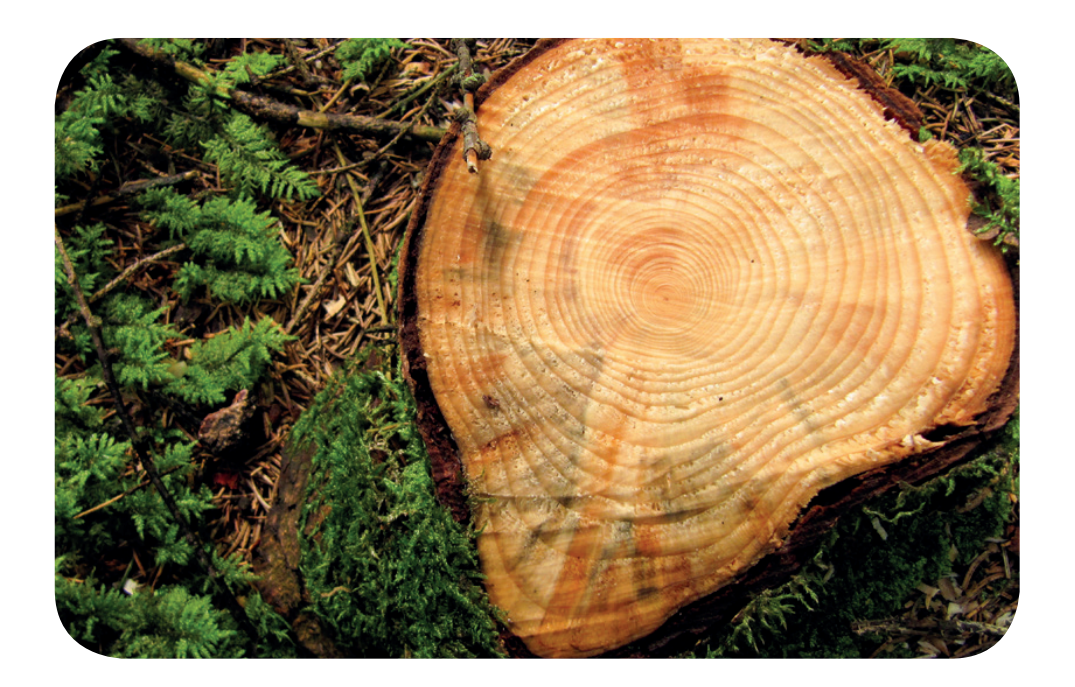
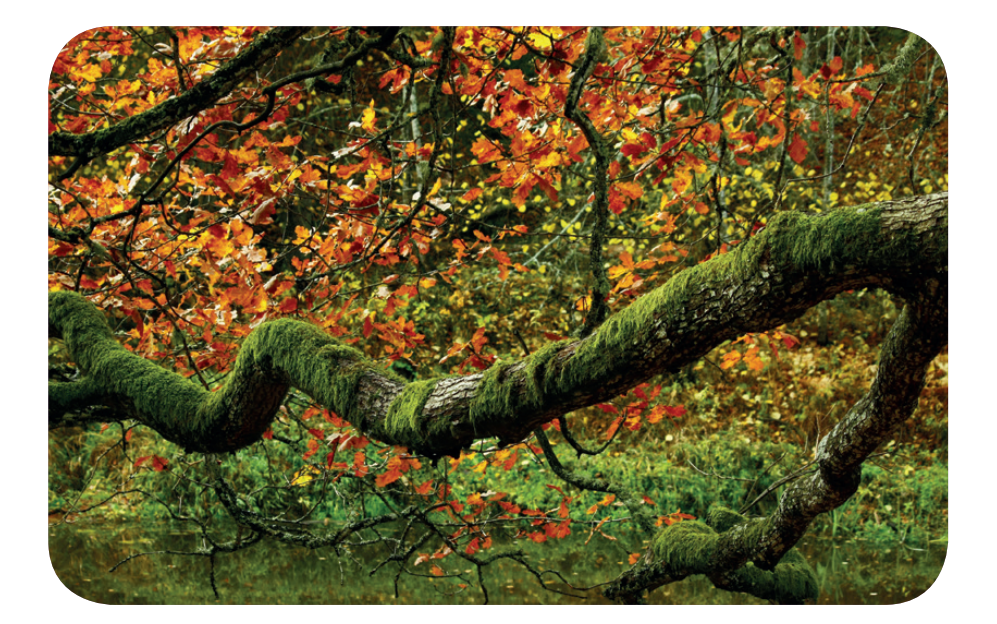
The snow melts from the southern slopes. The snow is therefore held for the longest on the northern slopes during spring melting. Sunflowers follow the Sun, even when the sky is overcast. The front of beehives is usually turned to the south by beekeepers. Churches stand with their tower or the main entrance always turned to the west, the altar to the east.
In the morning the Sun rises in the east, at noon it is above the south and in the evening it sets in the west. In the case of the sunrise and sunset, this is a rough estimation of the direction, which is accurate only on the day of equinox, when the day is as long as the night. The cardinal directions can also be determined by the shadow, if at noon (the Sun is the highest above the horizon and at the same time above the south) we stand back to the Sun, our shadow is oriented to north.
If we want to be sure of the determination of the cardinal directions, it suffices to find a short stick that we poke into the ground. We mark the place where its shadow ends with a pebble. We wait until the shadow moves about a distance of one step, and again we mark the top of the shadow with another pebble. If we stand by the pebbles with our back turned at the stick, it should be right in front of us to the north, the west is on our left, the east on the right side, and logically the south behind our back.
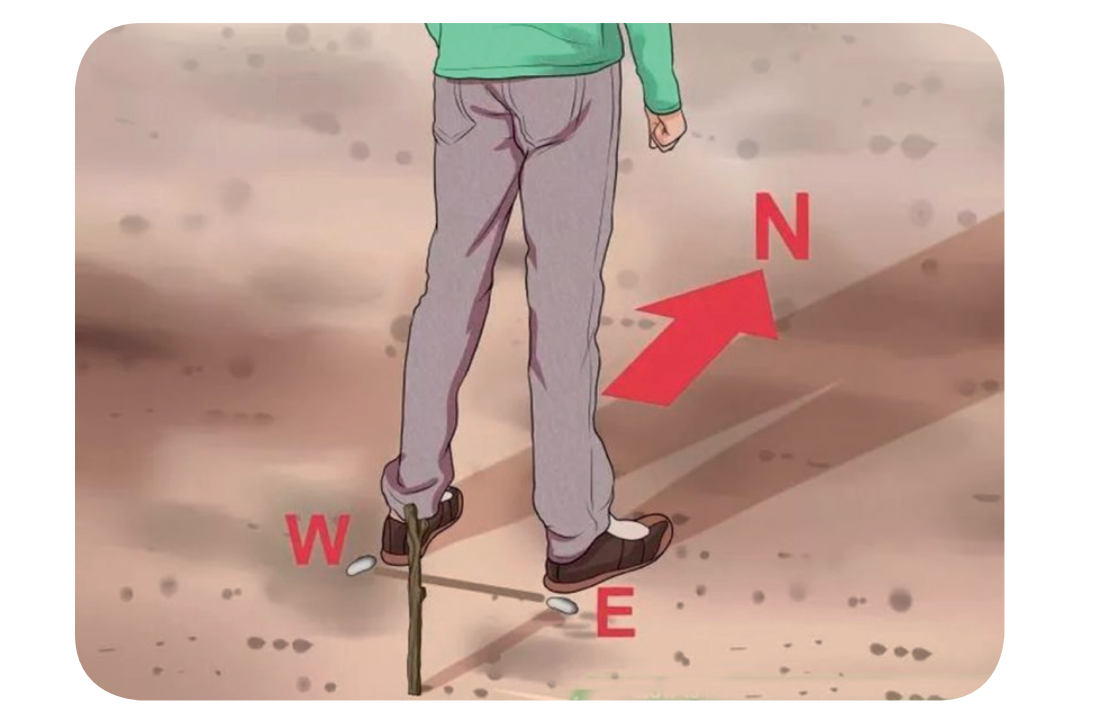
(source: http://www.radyprovsechny.cz/jak-urcit-svetove-strany-bez-kompasu/)
Stick one metre long straight rod vertically into a flat, clear piece of ground. Notice where its shadow falls, and mark the top of the shadow with a pebble or a stick (1). Wait for at least 15 minutes and mark the position of the new shadow (2). Connect the points and you will get the east-west direction, with the first mark (1) facing west. The north-south direction is perpendicular to this line. This method works anywhere during the day if the sun is shining, and in any latitude. Use the method during the journey as a random check.
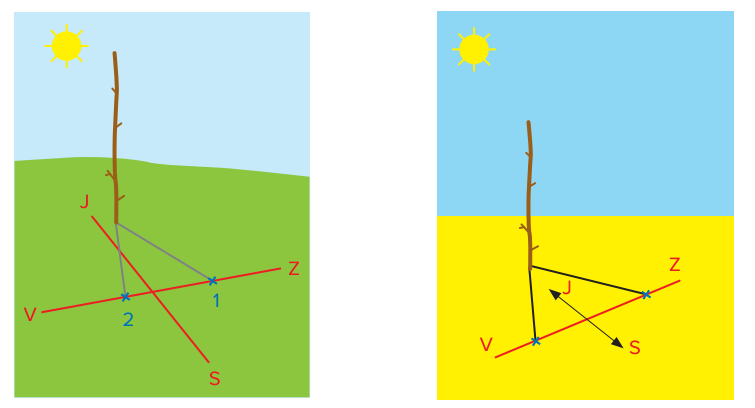
Another, more accurate method, however, only if you have time, requires you to mark the top of the first shadow in the morning. At this distance, sketch a circular arc, with one metre long rod being its centre. As the noon approaches, the shadow will shorten and move. In the afternoon, when the shadow begins to lengthen, mark the exact point at which the shadow touches the arc. Connect both points and you will get the west-east direction, with the morning point showing west.
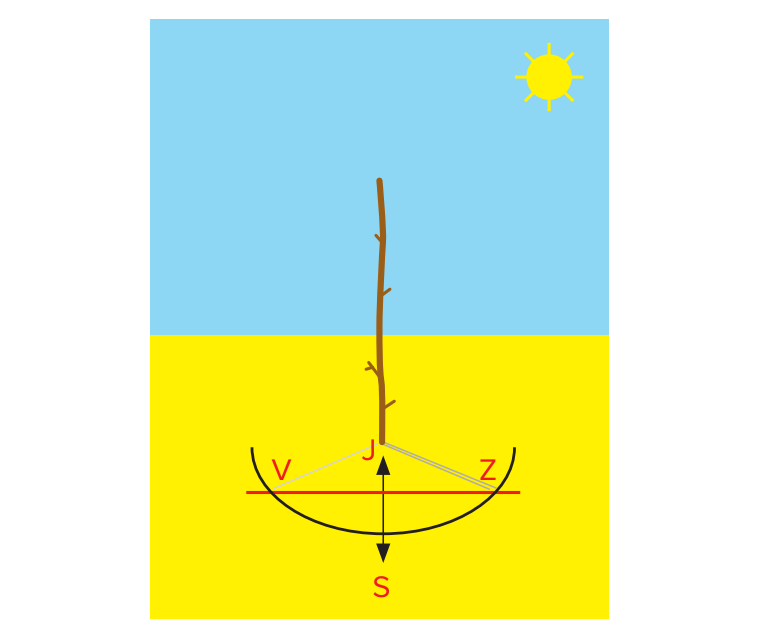
At a cloud free night, we can orientate by the stars. The North Star (aka Polaris) is a star, which lies nearly in a direct line with the Earth‘s rotational axis and is located directly at 50 degrees above the north horizon (it applies to the geographical coordinates of the Czech Republic).
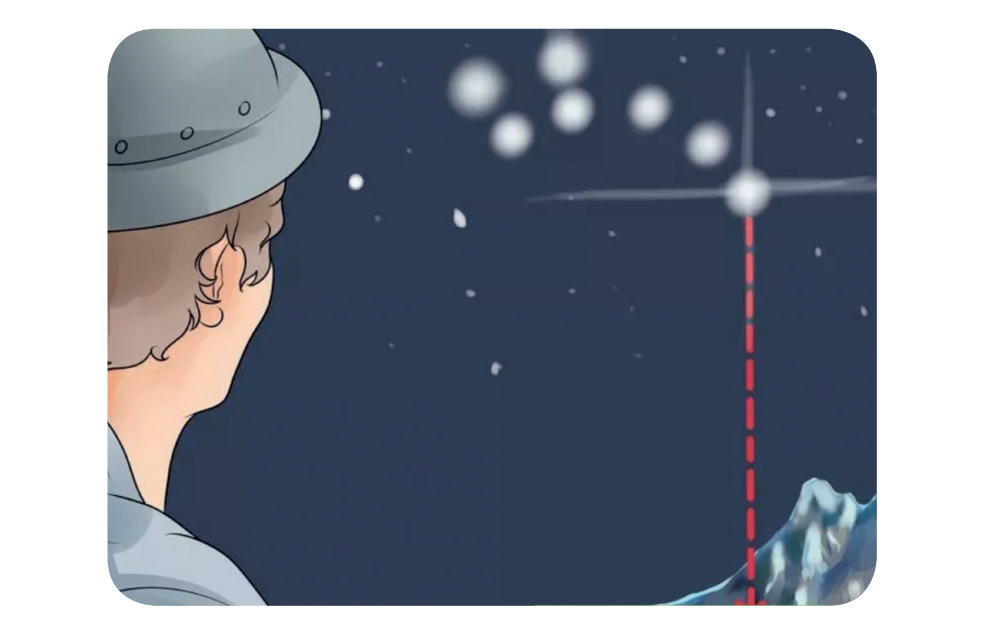
(source: http://www.radyprovsechny.cz/jak-urcit-svetove-strany-bez-kompasu/)
It is advisable to know some distinctive constellations, e.g. Ursa Major (or a part of it called Big Dipper – an asterism within Ursa Major), Cassiopeia or Orion. Like the other stars of the northern sky, they seem to revolve around the Polaris, but the first two constellations are well recognizable and do not almost set completely. You can also use the apparent movement of other stars to determine your location. Poke 2 sticks of uneven length into the ground so that you have a spot to watch by them (or use a rifle rear sight which you place in a stable position). Over these two fixed points, observe a star for about 15 minutes. You can watch any star, except for the Polaris. After this observation, you will find that the star seems to be moving. From this apparent movement of the star you can deduce the direction, which you are heading to.
In the Northern hemisphere, the following rules apply: when a star rises, you are looking straight to the east. When a star is descending, you are looking straight to the west. When a star moves in an arc way to the right, you are looking south. When the star moves in an arc way to the left, you are looking north. In the Southern hemisphere, these rules are reversed:
The Moon moves in the sky, like the Sun, along the southern part of the sky from east to west. Unlike the Sun, however, the place and time of its rise and setting are governed by the phase it is at. Depending on the time and phase of the Moon, you can easily determine the direction. When daylight saving time applies, time is one hour ahead.

At any phase of the Moon, when it is illuminated only partly, it is possible to roughly determine the southern direction as the intersection of the horizon and the line of the Moon‘s horns.
